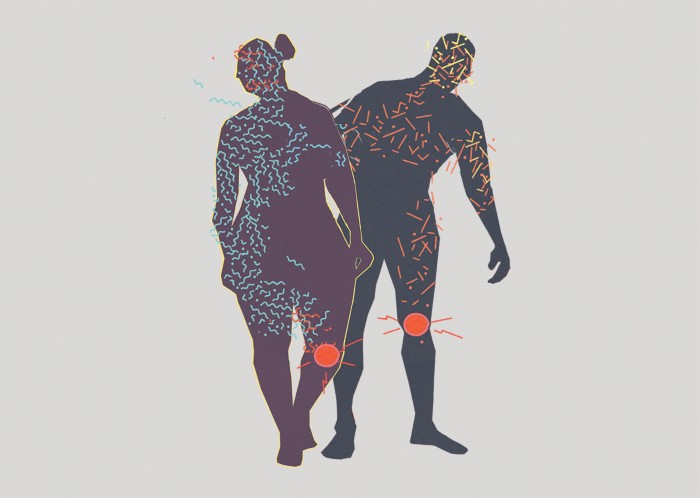Chronic Pain Differences Between the Sexes
"The more excitability [in the neurons sending pain messages to the brain], the more potential for increased pain.""[The research and growing urgency to improve understanding of male-female differences in pain processing had] invigorated [the field]. It is also a challenge. It means we have to double the amount of experiments.""They [pharmaceutical industry] don't want to invest a lot of money in developing something that may not work."Michael Hildebrand, neuroscientist, principal investigator, Carleton University"Women are disproportionately impacted by the burden of chronic pain. They are more likely than men to report low back pain, neck pain, orofacial pain, and neuropathic pain, and twice as many women report common migraines or headaches.""[Taking into account sex differences and the rising health crisis of poorly managed chronic pain, it becomes essential to] systematically investigate the neurobiological underpinnings of pain processing in both sexes.""Unfortunately, the vast majority of preclinical pain research has been conducted in male rodents only."Research Team
 |
| Illustration by Paddy Mills |
Neurosurgeon Dr.Eve Tsai, a scientist at the Ottawa Hospital Research Institute, pioneered use of donated spinal tissue for research. She has collaborated with Annemarie Dedek, a post-doctoral fellow, and neuroscientist Michael Hildebrand, in research into sex differences in spinal pain processing. The team of researchers owe their breakthrough discovery to human spinal cord tissue obtained from organ donors.
The result thus far of their research is a first-time discovery that neurons in the spinal cord, process pain signals differently in women than in men. Recently published in the journal BRAIN, the work has gained attention, reflecting its potential implications for future development of drugs in the more effective treatment of chronic pain. There is an urgency for improved treatment in the management of chronic pain, highlighted by the deadly opioid epidemic.
The researchers point out that future studies are required to fully understand how the biological differences potentially contribute to sex differences in signalling of chronic pain. In this way, the research has the effect of an introduction to the fundamental issue of biological differences already known to exist but insufficiently studied.
The team of neuroscientists originally were in the process of studying pain signalling mechanism neurons in the spinal cord that could lead to chronic pain. Their research made use of rat models prior to access to human spinal cord tissue through the Trillium gift of Life Network managing organ donations in the province. Ottawa represents one of few centres making use of human models from donor tissue for research.
The contrast in the research with the use of rat models followed by the use of human tissue, revealed the "light bulb moment" when researchers realized they were witnessing a different response in pain messaging in males and females. All the rats used for the study were male, common in scientific research, whereas the human models included female donors, which turned out to be a key findings difference.
Where conventionally research made use of male animal models with the understanding at the time that no difference would exist between outcomes for both sexes, the world of research now understands that was a misconception. Research must include both males and females. "We have a lot of catching up to do", remarked Dr.Hildebrand.
Women suffer chronic pain at a higher rate than do men, and more fully realizing mechanisms for transmitting pain signals is a gain toward the improvement of treatment for various forms of chronic pain. A realization far too long in the thought stage, now moved into the action stage.

Labels: Chronic Pain, Research, Sex Pain Signal Differentials

0 Comments:
Post a Comment
<< Home